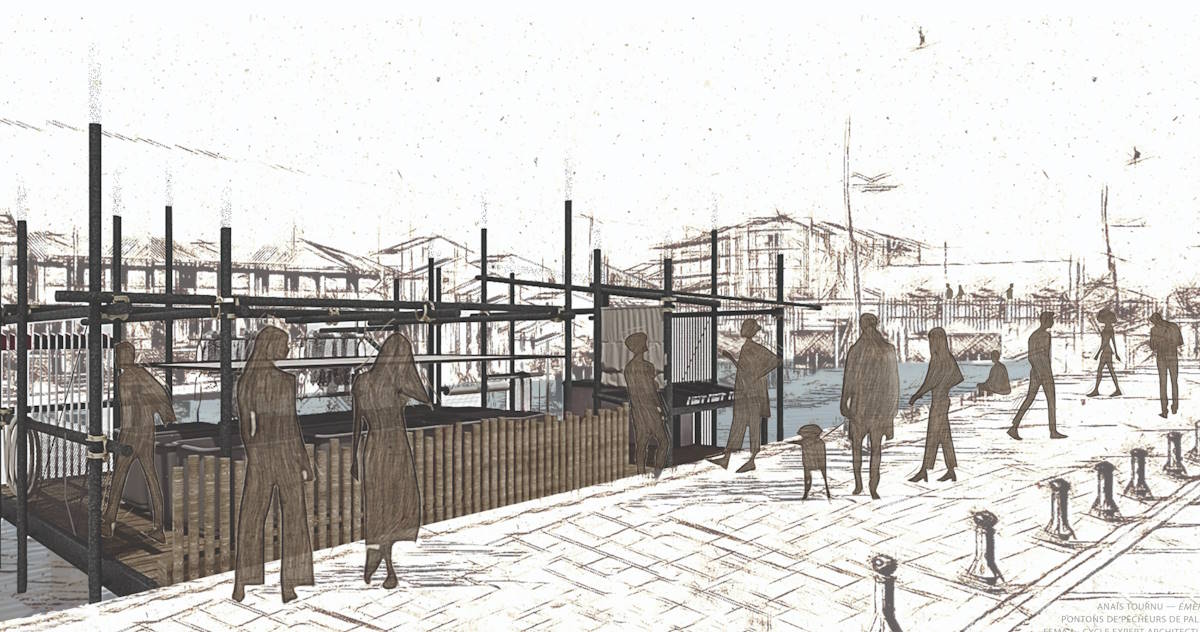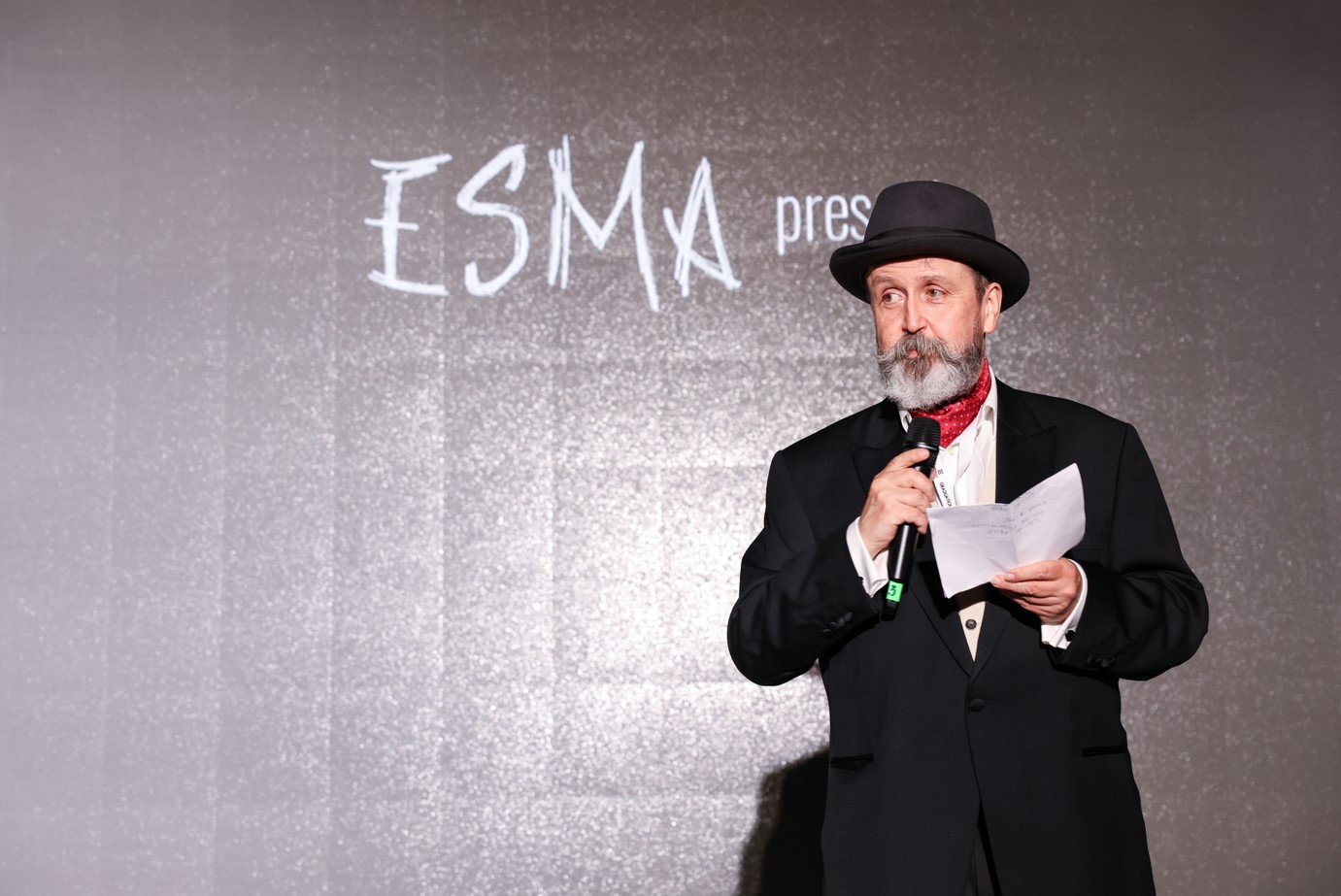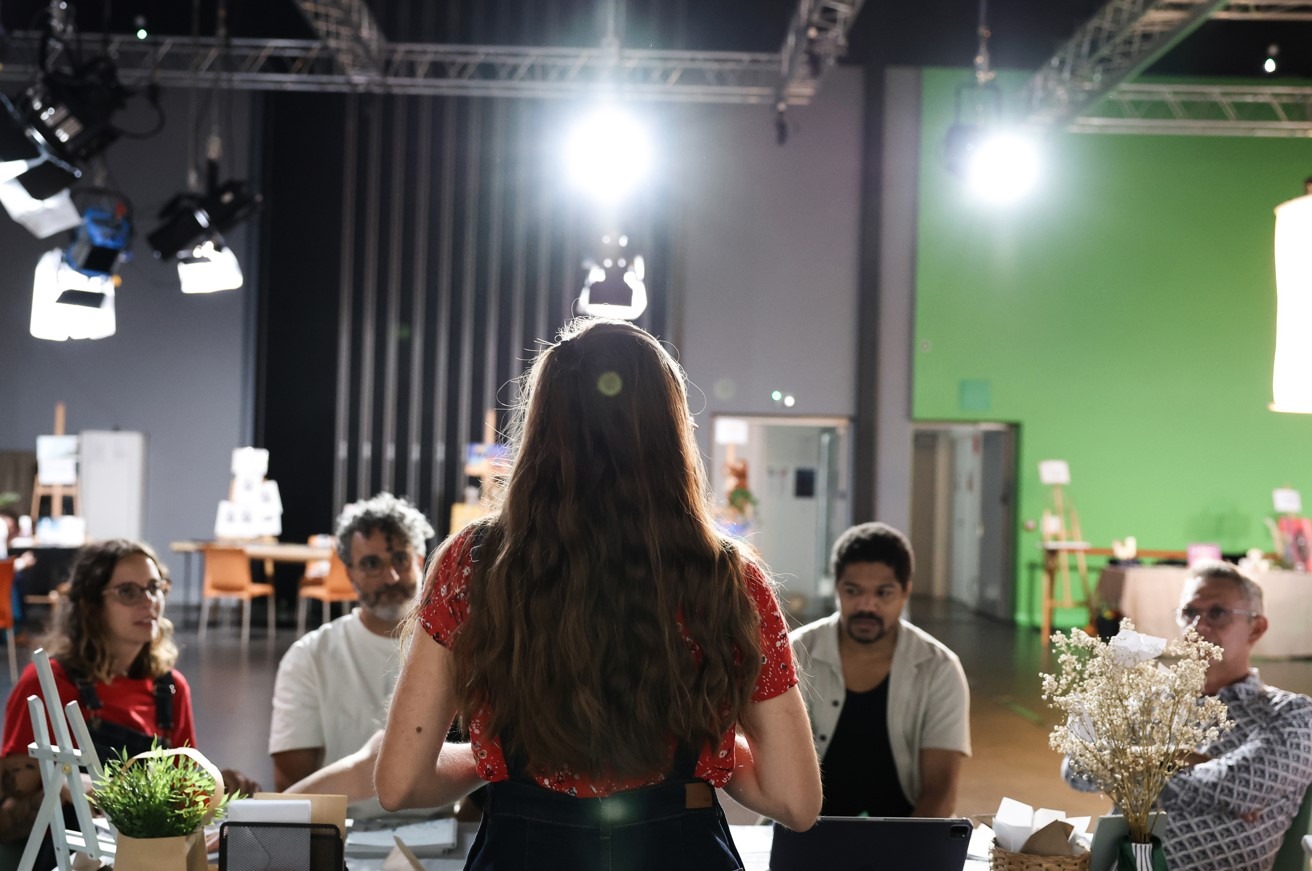
- date 08.21.2023
- type News
- campus Montpellier
- Formation Space Design
ESMA's Professional Interior Design Cycle students, in their specialisation year, have been working on the redevelopment of the fishermen's pontoons on the Georges Clémenceau and Paul Cunq quays in Palavas. They were asked to reflect on the Palavas region and its specific local features, while paying particular attention to the technical dimension.
Palavas-les-Flots is both a seaside resort and a fishing port, with both quays coming alive every morning as the boats pull into port. Traditionally, each fisherman has his own stall selling fresh fish caught locally during the night (cuttlefish, red mullet, tuna, sole, etc.) and sold at the auction.
FURNITURE FOR BRIDGES AND FUNCTIONAL POINTS OF SALE
The fishermen’s pontoons were the focus of particular attention from ESMA students, who were given the task of developing proposals for pontoons and sales outlets that would enhance the fishing industry and the town as a whole.
“In terms of the teaching approach, the subject addresses the issue of local specificity while paying particular attention to the technical dimension. The main aim is to professionalise the project approach in terms of functionality, technique and aesthetics, while giving a deeper meaning to the process”, explains Johanna Baticle, the teacher who accompanied the students on this project, along with her colleagues Nicolas Roche, Thibaut Miossec and Marie Bastide.
To begin with, the students carried out a group study of the site, observing the local characteristics (culture, landscape, history, geography, resources and risks, natural areas, fauna, flora and climate, activities and heritage, regulatory documents, land registry, PLU, maritime domain, etc.).
A professional approach to the project process
After this approach, which enabled the site’s issues and constraints to be understood, a meeting with the fishermen and the elected representative for trade gave a better understanding of the issues linked to fishing, as well as the questions, expectations, problems, constraints, potential and challenges for development. “Exchanges with local players (elected representatives) and users (fishermen) upstream and during the final feedback process give concrete expression to a professional approach to the project process. The student is required to carry out research with a view to identifying the issues and the means to achieve a relevant response”.
The Professional Interior Architecture Cycle students then took on the demanding project individually, as it was located on a site of rare authenticity, with the need to add something extra without altering the specific features of Palavas. “The scale and nature of the project made it possible to address the question of how to do things, with an approach to installation techniques reinforced by the involvement of an engineer and precise expectations in terms of definition and description”.
An exhibition in palavas
Project communication was also worked on, both graphically and in writing and orally.
Finally, a presentation of the work to fishermen and elected representatives provided an opportunity to discuss these projects, which, although fictitious, remain forward-looking.
The exhibition of work entitled ‘’Upgrading the fishermen’s pontoons in Palavas-les-Flots‘’ by the ESMA students was held at the Palavas-les-Flots Tourist Office at the beginning of April, ‘’thus offering a rewarding end to the project‘’.
The results
















